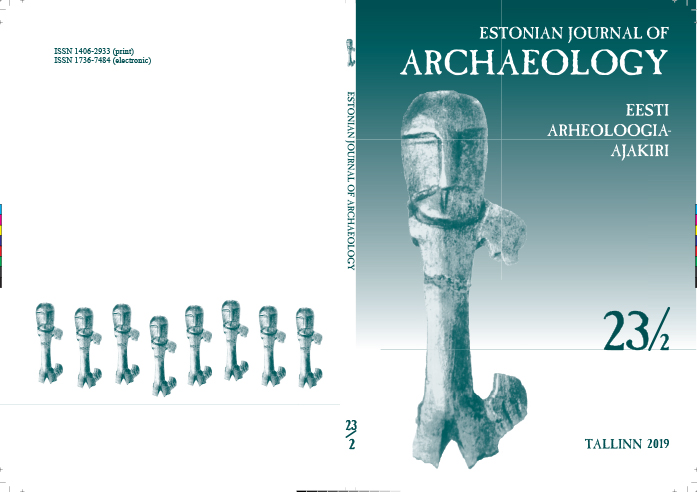TRACING THE BOUNDARY: SOUTHERN PERIPHERY OF THE NEOLITHIC ASBESTOS WARE
TRACING THE BOUNDARY: SOUTHERN PERIPHERY OF THE NEOLITHIC ASBESTOS WARE
Author(s): Dmitriy V. Gerasimov, Tatyana M. Gusentsova, Margarita KholkinaSubject(s): Archaeology
Published by: Teaduste Akadeemia Kirjastus
Summary/Abstract: The paper summarizes the current data on Neolithic Asbestos Ware at the southern periphery of its distribution – the Karelian Isthmus and the southern Ladoga area, north-western Russia, to study communication networks within the territory of this phenomenon and to trace its southern border. Morphology and ornamentation of pottery with asbestos temper from 33 sites (including very recent discoveries) was analysed and compared with the characteristics of the defined Asbestos Ware types. All the main types of Neolithic Asbestos Ware defined on the territory of Finland – Early Asbestos Ware, Typical Combed Ware with asbestos, Kierikki, Pöljä – are presented in Karelian Isthmus including its southern part. Those territories were well connected with the “core” of the Asbestos Ware tradition in the Saimaa area from the beginning of its appearance. Asbestos Ware from the southern Ladoga shore sites resembles both western and eastern (Karelian) traditions, shows some common traits with Volosovo culture from the Upper Volga and ceramics from Modlona sites from Vologda region, but also has local peculiarities. Analysis of sites distribution shows that the southern boundary of spreading of the Late Neolithic Asbestos Ware follows that of the Early Asbestos Ware and the Late Sperrings (Ka1:2) Ware. Although many spatial and chronological differences in material culture, subsistence strategies and communication networks are visible within time and space frames of the Asbestos Ware phenomenon, it may be assumed that the use of the asbestos temper could be indicative of cultural relations that united certain territories.
Journal: Eesti Arheoloogia Ajakiri
- Issue Year: 23/2019
- Issue No: 2
- Page Range: 146-172
- Page Count: 27
- Language: English

